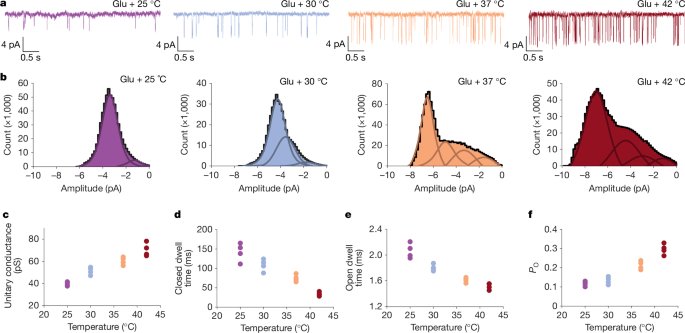23andMe cofounder says company 'lost its way' without 'proper governance'
www.businessinsider.com
23andMe cofounder Linda Avey discussed the company in a social media post on Wednesday. Justin Sullivan/Getty Images 2025-03-26T23:20:33Z SaveSaved Read in app This story is available exclusively to Business Insider subscribers. Become an Insider and start reading now.Have an account? 23andMe cofounder Linda Avey discussed the company in a LinkedIn post on Wednesday.Avey said the biotech company "lost its way" without product development and "proper governance."23andMe filed for bankruptcy, and CEO Anne Wojcicki resigned this week.23andMe cofounder Linda Avey is mourning what the biotech company could have become.Avey reflected on 23andMe and criticized former CEO Anne Wojcicki in a LinkedIn post on Wednesday, saying that "it was time to express my views on the company, after witnessing the downfall of an idea and brand that could have become the world's leading digital health platform."On Sunday, 23andMe filed for Chapter 11 bankruptcy protection and announced Wojcicki's resignation. Avey worked alongside Wojcicki and Paul Cusenza to launch the biotech company in Silicon Valley nearly twenty years ago. The company makes direct-to-consumer DNA test kits and explores genetic research. Avey served as co-president from 2006 to 2009 and remained a company board member until 2011.In the post, Avey said the idea for 23andMe sparked after working in life science research for years."A lightbulb went on if I was interested in accessing my own data, wouldn't others feel the same way? Getting deeply personalized information about what makes us 'us' seemed undeniable. It didn't take long for the concept to unfold," she said.Avey said she pursued this goal under 23andMe until 2009, when her time at the company was "cut short.""My time at the company was cut short in 2009, when my co-founder Anne convinced the board that she should run the company. And I must be honest, I was frustrated with the direction the company took after that point," Avey said. "After my departure, she architected a majority vote for herself that eliminated board governance, even as the board expanded over the following funding rounds. For better or worse, the buck stopped with her. It came as no surprise when the board resigned last year."Avey said that 23andMe "was in a unique position" initially, and it's "painful to think what could have been.""The company has amassed one of the largest genetic data collections in the world, and to Anne's credit, created a terrific consumer brand. We can only imagine the importance of the dataset that could have been built, combining blood work, deeper gene sequencing, wearable data, and providing actionable insights," Avey said. "Now, the market is fragmented with data siloed in many different companies."Avey said 23andMe "lost its way" without "consumer-focused product development" and "proper governance.""The 14+ million people who bought into the concept deserve to see their data moved to a secure platform with new leadership and vision," Avey said.Avey rounded out her statement by emphasizing the importance of a balanced C-Suite."There are many cautionary tales buried in the 23andMe story. Striking a balance between the desire for founder control and board oversight is essential; otherwise, why have a board at all?' Avey said. "It's a familiar trope in Silicon Valley that wealth translates into unquestionable business savvy. But no matter how great an idea, the importance of the dynamics of the founding team and their ability to listen to feedback is key."Avey, Wojcicki, and representatives for 23andMe did not respond to requests for comment from Business Insider.23andMe struggled before filing for bankruptcy23andMe has weathered several storms since 2023.Although privacy concerns have bogged down the company for years, criticism spiked that October over news that some user data had been compromised. Hackers claiming access to the data, including birth details and names, were selling it on the dark web. 23andMe told BI the ancestry data for almost 7 million users were accessed. Following a class action lawsuit, the company agreed to a $30 million settlement last September.That same month, the independent directors of 23andMe's board resigned in a letter addressed to Wojcicki, saying it's "clear that we differ on the strategic direction for the Company going forward."23andMe announced three new independent board members in October 2024 and added another member this month.Wojcicki landed in the hot seat in 2024 when an SEC filing said she "would be open to considering third-party takeover proposals." After consumers expressed concerns over what could happen to their personal data, Wojcicki reversed course.The cracks at 23andMe deepened last November when the company announced it was restructuring its business, laying off roughly 40% of its staff, and ending further development of its therapeutics program.Most recently, 23andMe said it will continue to operate while seeking a buyer."After a thorough evaluation of strategic alternatives, we have determined that a court-supervised sale process is the best path forward to maximize the value of the business," chair Mark Jensen said in a press release. "We expect the court-supervised process will advance our efforts to address the operational and financial challenges we face, including further cost reductions and the resolution of legal and leasehold liabilities."
0 Yorumlar
·0 hisse senetleri
·85 Views










